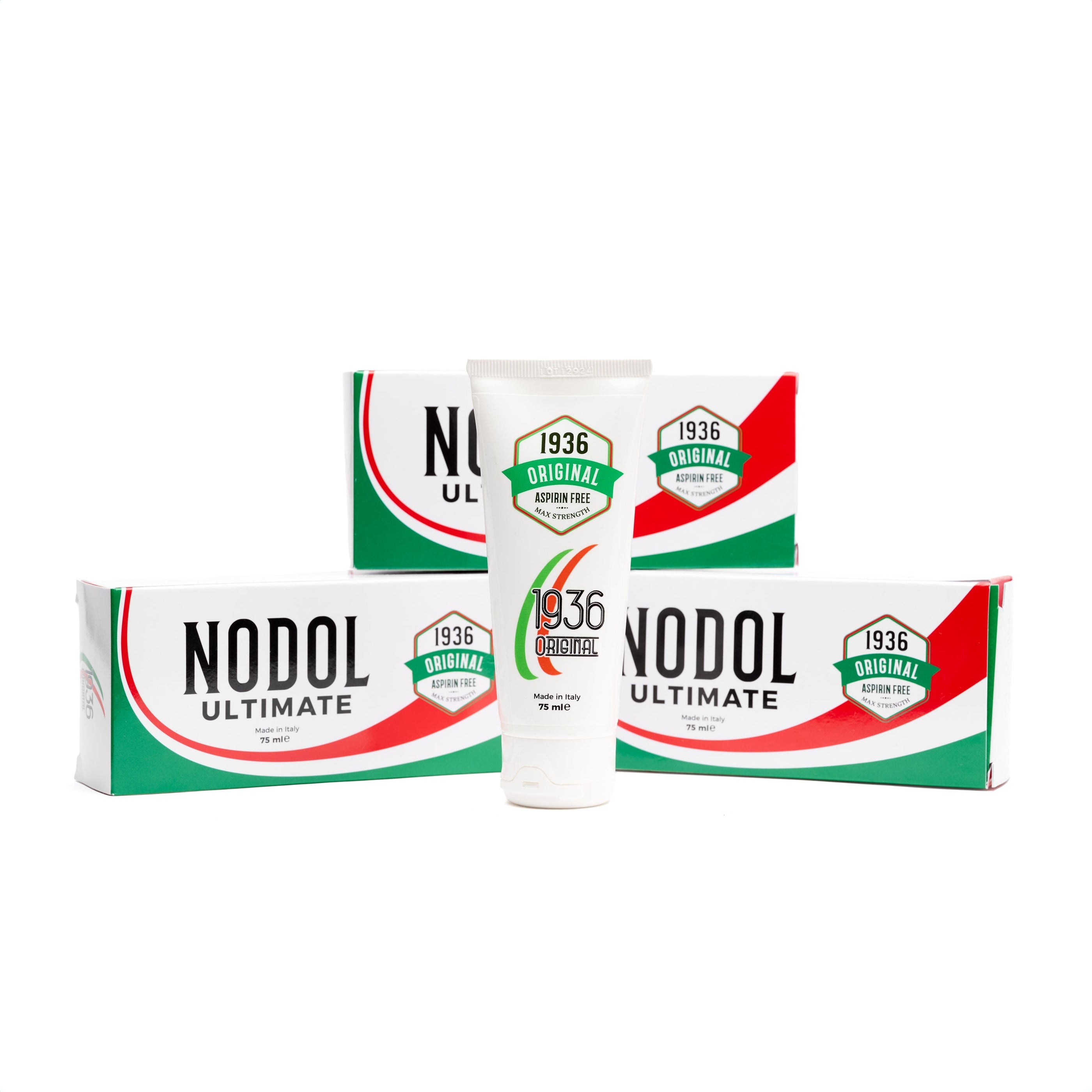Wrist Pain and Treatments: Your Ultimate Guide for 2024

Introduction
Wrist pain is a common problem that can affect people of all ages. It can be caused by various factors such as injuries, repetitive strain, and underlying medical conditions. As we enter 2024, it is important to understand the best treatments for wrist pain because this issue is becoming more common in our fast-paced lives. Whether you're spending long hours working on a computer or participating in physical activities, wrist pain can have a significant impact on your daily life.
In this comprehensive guide, you'll discover:
- The different causes and symptoms of wrist pain.
- Effective ways to diagnose the underlying issue.
- Various treatment options available, including home remedies and professional interventions.
- Practical tips to prevent wrist injuries.
- Important signs that indicate when you should seek medical advice.
This article provides you with the knowledge you need to effectively manage and prevent wrist pain, ensuring healthy wrists in 2024 and beyond.
Understanding Wrist Pain
Wrist pain is a common problem that affects many people. It refers to any discomfort or pain in the wrist joint, which is made up of various bones, muscles, nerves, tendons, ligaments, and blood vessels. When this delicate balance is disrupted, it can lead to significant discomfort impacting daily life activities such as typing, cooking, or even holding objects.
Common Causes of Wrist Pain
Knowing what causes wrist pain is important for managing it effectively. Here are some common reasons why people experience wrist pain:
- Sprains and Fractures: These injuries can cause sudden wrist pain and often happen due to falls or accidents.
- Arthritis: Both osteoarthritis and rheumatoid arthritis can affect the wrist. Osteoarthritis usually causes a dull ache similar to a toothache because of wear and tear on the joints. Rheumatoid arthritis involves inflammation leading to pain and swelling.
- Carpal Tunnel Syndrome: This condition is characterised by a pins and needles sensation mainly in the thumb, index, and middle fingers caused by pressure on the median nerve.
- Ganglion Cysts: These fluid-filled lumps can develop along the tendons or joints of wrists and hands.
- De Quervain Tenosynovitis: This condition affects the tendons around your thumb and wrist causing pain in those areas.
- Kienbock Disease: A rare disorder where the blood supply to one of the small bones in the wrist is interrupted.
- Repetitive Stress Injuries: Activities such as knitting or hair cutting can lead to stress injuries over time.
Symptoms of Wrist Pain
The symptoms you experience with wrist pain can vary depending on what's causing it:
- If you have osteoarthritis, you might feel a persistent dull ache like a toothache.
- With carpal tunnel syndrome, expect numbness or tingling sensations—a classic pins and needles feeling.
- Sudden wrist pain without any injury could indicate underlying issues like ganglion cysts or De Quervain tenosynovitis.
Each cause presents unique challenges; hence understanding specific symptoms helps tailor appropriate treatment plans. Managing these symptoms often involves lifestyle adjustments such as using wrist supports for arthritis or exploring De Quervain tenosynovitis treatment options. Such measures aim not just at alleviating existing discomfort but also preventing future episodes of hand and wrist pain.
Diagnosing Wrist Pain
Diagnosing wrist pain can be complex due to the multitude of potential causes. Conditions such as sprains, fractures, arthritis, and repetitive strain injuries all present similar symptoms like a swollen wrist or sharp pain in the wrist. This overlap in symptoms makes identifying the exact cause challenging.
Consulting healthcare providers is crucial for anyone experiencing persistent or severe pain in the wrist joint. A professional diagnosis helps determine the underlying cause and guides appropriate treatment. Ignoring symptoms like a sore wrist joint or pinched nerve in wrist may lead to complications that could have been prevented with early intervention.
Common diagnostic tests are employed by healthcare providers to identify the source of wrist pain:
- Physical Examination: Assessment of swelling, tenderness, range of motion, and pain location.
- Imaging Tests: X-rays, MRIs, or CT scans can reveal fractures, arthritis, or other structural issues.
- Electrodiagnostic Testing: This test evaluates the electrical activity of muscles and nerves to diagnose conditions like carpal tunnel syndrome.
Understanding these tests and their purposes highlights why seeking diagnosis for wrist issues is a vital step towards effective management and relief.
Treatment Options for Wrist Pain
Home Remedies and Initial Treatments
When considering treatment for wrist pain, starting with home remedies can be both effective and easily accessible. Here are some first-line treatments that might help alleviate discomfort:
- Rest: Giving your wrist adequate rest is crucial. Avoid activities that aggravate the pain to allow healing.
- Ice Application: Applying ice packs to the affected area can reduce swelling and numb sharp pain. Aim for 15-20 minute sessions several times a day.
- Over-the-Counter NSAIDs: Nonsteroidal anti-inflammatory drugs like ibuprofen or naproxen can relieve pain and reduce inflammation.
- Ergonomic Adjustments: Making changes in your work or home environment can prevent strain on your wrist. Consider using ergonomic keyboards, mouse pads with wrist support, or adjusting the height of your chair and desk.
These approaches are often sufficient for managing mild symptoms of wrist problems, including arthritis in the wrist and thumb. However, if these treatments do not bring relief, it may be time to explore other options with a healthcare provider.
Professional Treatment Approaches
When home remedies and initial treatments don't alleviate wrist pain, professional treatment approaches come into play.
Physical Therapy
Physical therapy is often recommended as an effective method to enhance wrist strength and flexibility. A therapist may guide you through exercises tailored to your specific condition, helping to reduce pain and restore function.
Corticosteroids for Inflammation
For cases involving significant inflammation, corticosteroids can be administered. These powerful anti-inflammatory medications can be given orally or through injections directly into the wrist, offering relief from swelling and discomfort associated with conditions like arthritis in the wrist and thumb.
Surgical Options
Surgical options are considered when conservative treatments fail to provide adequate relief. Depending on the underlying cause of your wrist problems, surgery might involve repairing ligaments, removing cysts, or relieving nerve compression in disorders such as carpal tunnel syndrome.
Consulting with a healthcare provider will help in finding the most appropriate treatment for your specific wrist pain and treatments needs.
Preventing Wrist Injuries
Preventing wrist injuries is crucial for maintaining everyday functionality and avoiding discomfort. Implementing effective strategies can significantly reduce the risk of wrist pain and treatments. Ergonomic adjustments are key when performing repetitive tasks, whether at work or during leisure activities. Here are some strategies to consider:
1. Ergonomic Workstations
Ensure your workspace is set up to minimise strain on your wrists. This includes using ergonomically designed keyboards and mice, adjusting chair height, and ensuring your wrists are in a neutral position while typing.
2. Frequent Breaks
Taking regular breaks from repetitive tasks helps prevent overuse injuries. Incorporate stretching exercises that focus on wrist flexibility and strength.
3. Proper Technique
Whether playing sports or engaging in hobbies like knitting or gardening, using the right techniques can prevent strain on the wrists.
In high-risk sports or activities, the use of protective gear is essential. Wrist guards or braces can offer support and protection from impact injuries. These preventative measures not only safeguard against immediate injury but also contribute to long-term wrist health by minimising wear and tear over time.
When to See a Doctor
Knowing when to see a doctor for wrist pain is important to avoid any potential problems. If the pain doesn't go away or gets worse over time, it's best not to ignore it. Here are some signs that you should seek medical advice:
- Persistent Pain: If your wrist pain lasts for more than a few days even after trying home remedies like resting and applying ice, it's a good idea to get it checked by a professional.
- Swelling or Redness: If you notice swelling, tenderness, or redness in your wrist, it could be a sign of an underlying issue that needs medical attention.
- Limited Movement: If you're having trouble moving your wrist or gripping things, it might indicate a more serious injury.
- Numbness or Tingling: If you're experiencing numbness or tingling sensations, especially if they're related to carpal tunnel syndrome, it's important to seek prompt treatment.
Getting an accurate diagnosis and timely treatment can help prevent further injury and speed up your recovery. It's always best to consult with healthcare providers who can provide the right care based on the specific causes of your wrist pain.
Conclusion
Addressing sore hands and wrists promptly and effectively is essential for maintaining your quality of life. Understanding the causes of wrist pain enables you to choose suitable treatment options, whether it's simple rest and ice or more advanced interventions. By recognising the signs of pain in both wrists and seeking timely medical advice, you can prevent complications. Engage in preventive measures such as ergonomic adjustments and protective gear use to support aching hands and wrists. Stay proactive in caring for your wrists to ensure their health and functionality in daily activities.
FAQs
What are the common causes of wrist pain?
Wrist pain can be caused by a variety of factors, including repetitive strain injuries, arthritis, tendonitis, fractures, and carpal tunnel syndrome. Understanding these causes is essential for effective management.
What symptoms should I look for if I have wrist pain?
Symptoms of wrist pain can vary widely but may include swelling, tenderness, stiffness, limited range of motion, and a sensation of weakness or numbness in the hand. It's important to note the specific symptoms you experience to aid in diagnosis.
When should I consider seeing a doctor for wrist pain?
You should see a doctor if your wrist pain persists despite home treatments, worsens over time, is accompanied by severe swelling or bruising, or if you experience numbness or tingling in your fingers. Early intervention can prevent further complications.
What initial home remedies can I try for wrist pain?
Initial treatments for wrist pain often include rest, ice application to reduce inflammation, compression with wraps or braces, and elevation of the wrist. These methods can help alleviate discomfort before seeking professional treatment.
What professional treatment options are available for wrist pain?
If home remedies do not provide relief, professional treatment options include physical therapy to strengthen the wrist and improve mobility, corticosteroid injections to reduce inflammation, and in severe cases, surgical interventions may be considered.
How can I prevent wrist injuries in my daily activities?
Preventing wrist injuries involves setting up ergonomic workstations to minimize strain, taking frequent breaks from repetitive tasks to avoid overuse injuries, and using proper techniques during sports or hobbies. Awareness and proactive measures are key to maintaining wrist health.












